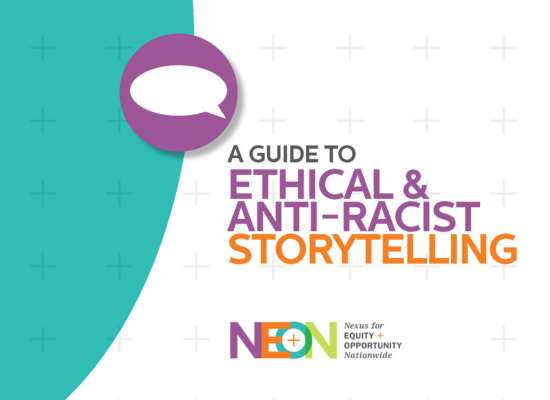A Guide to Anti-Racist, Ethical Storytelling
October 26, 2023
By: Scott Westcott
Back when I was a full-time journalist, I interviewed Ernie Preate, a former Pennsylvania Attorney General who had built a formidable political career as a hardline, throw-away-the-key prosecutor.
As fate would have it, Preate got tangled up in his own legal troubles and ended up serving time at a federal prison.
Once behind bars, Preate got a first-hand view of what happens after the judge slams the gavel for the final time. And as he befriended some of the other inmates, the vast majority of whom were men of color, he began to gain a deeper understanding of the systemic inequities that had contributed to some of them doing time or serving out sentences far more severe than their white counterparts.
Preate left prison with a new perspective — one that led him to become an outspoken opponent of the death penalty.
That story resurfaced in my mind quite a few times as I had the opportunity to work closely with community foundation communicators who are part of NEON — a group of nine community foundations committed to dismantling systemic racism.
The NEON cohort collaborated with our Turn Two team to develop an ethical anti-racist storytelling guide to help writers and content creators tell stories in ways that honor and empower people who are the subjects of those stories.
Through the process of developing the guide, I experienced my own series of epiphanies as I reflected on my past work as a journalist and writer. And I came to the unavoidable conclusion that some of the practices I and my fellow journalists employed often contributed to perpetuating stereotypes, biases, and systemic inequities.
Let me be clear. There are immeasurable benefits to a free press — and we must protect press freedoms as central to a functional democracy. Yet you can be a strong advocate for journalistic freedom while also acknowledging that American journalism is part of a system that operates on assumptions and biases that can negatively impact large segments of our population.
During most of my time as a newspaper journalist, I worked in newsrooms consisting of all-white editors, with the unconscious assumption we were producing news for a white audience.
When we did cover news involving people of color, it was rarely positive. We would swoop in, try to capture a few quotes or photos -- often of people experiencing one of the worst traumas of their lives -- and then zoom back to the newsroom to file a story.
I am sure I wrote more than a few pieces that perpetuated the white savior stereotype. And I gave little thought to what happened to the people I wrote about after their stories appeared in print.
While many news outlets today are taking steps to deliver more equitable and balanced coverage, I fear that 24/7 nature of the news business will always prove problematic when it comes to issues involving equity and race.
Yet communicators who tell stories for nonprofits, foundations, and other organizations have a fresh opportunity, and I would argue a clear responsibility, to rethink all aspects of their story gathering, storytelling, and publishing practices.
I’d like to think the guide offers a good start. To some extent, it remains a work in progress because there is always more to learn.
We encourage you to give it a close review and keep it handy as you work to tell the stories that are meaningful to your organization and your key audiences.
Stories are powerful tools. They help us learn, inspire us to action, and see our communities and world through fresh eyes.
But we have a responsibility to tell those stories in ways that they don’t inflict undue harm, perpetuate stereotypes, or reinforce inequitable systems.
Progress is possible. One story at a time.

